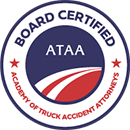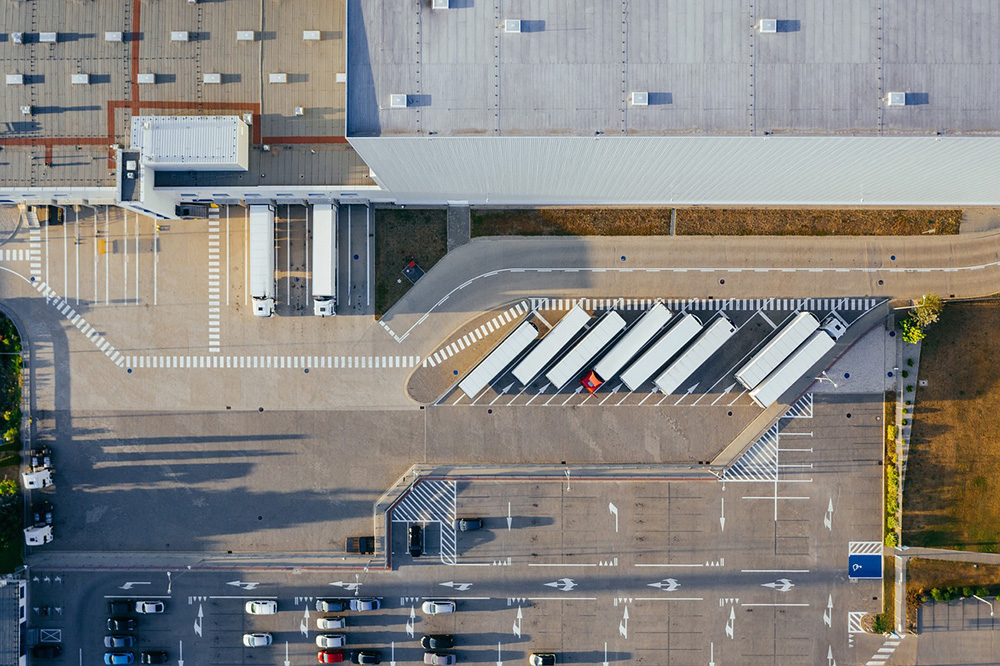What Is Tractor-Trailer Platooning and Is it Safe?
Over half of drivers report feelings of anxiety or fear when traveling near a tractor-trailer on the highway. Given that big rigs weigh up to 40 tons and cause thousands of deaths each year, this is a reasonable cause of driver anxiety.
It’s understandable, then, that the idea of several large trucks traveling en masse down the highway may strike fear in the hearts of many motorists. However, research indicates that this type of trucking formation—known as platooning—may be better for both the environment and the commercial trucking industry as a whole.
Truck platoons, also called road trains, may become a more common sight on our highways in the upcoming months and years.
Below, we’ll look to answer the question: What is tractor-trailer platooning? And more importantly, is it safe?
What Is Truck Platooning?
Tractor-trailer platooning is when a group of trucks (usually two to four) works in tandem, using advanced technology to make communication between vehicles possible.
Trucks are tethered together via automated systems that synchronize speed, following distance, braking, and responsiveness to environmental factors like the movement of other cars. Platooning is considered a partially-automatic method of commercial truck operation. Truck drivers are mostly responsible for steering and overseeing the effective operation, while many of the other driving functions are controlled wirelessly.
Platooning has been heralded as a major advancement in increasing the environmental consciousness of the commercial trucking industry.
One of the main goals of a platooning deployment is greater fuel efficiency achieved through close-distance following methods that reduce air drag. According to the National Renewable Energy Laboratory (NREL), early research and implementation have been promising, with statistics indicating up to 10% fuel savings for leading trucks, 17% for middle trucks, and up to 13% fuel savings for following trucks in two- to three-truck platoons.
Much of the application of platooning methods in the United States has been based on earlier work and a study conducted in Sweden. In its pilot study, the Sweden4Platooning project successfully linked cross-brand trucks from Volvo and Scania in platoons that operated on over 12,000 km of public roads between the cities of Malmö and Jönköping.
What Technology Is Used in Truck Platooning?
Truck platooning relies on a number of advanced vehicle technologies that did not exist a mere handful of years ago. These automated trucking developments, coupled with a groundwork of research into their practical application, are quickly bringing about the widespread commercial deployment of tools that automate much of the work formerly performed by human truck operators.
Platooning uses a variety of technologies to latitudinally and/or longitudinally link and control tethered trucks, including:
- Vehicle-to-vehicle (V2V) communication that allows the wireless exchange of information about speed, position, and other data between trucks
- Adaptive cruise control (ACC) that controls speed and following distances between vehicles
- Cooperative adaptive cruise control (CACC), an extension of ACC that allows trucks to communicate so braking and acceleration can be performed cooperatively and simultaneously
- Collision avoidance system (CAS) technology that alerts drivers of imminent dangers and helps prevent crashes
- Electronic stability control (ESC) systems designed to reduce rollover incident rates
These and other emerging truck safety technologies are anticipated to help reduce costs and prevent accidents.
In the direction platooning systems are currently heading, experts expect to see, in the very near future, platoons in which only the lead truck is operated by a human driver, and all following trucks are fully automated.
What Are the Benefits of Tractor-Trailer Platooning?
The U.S. Department of Transportation (DOT) and the Federal Highway Administration (FHWA) are optimistic about the positive changes the adoption of platooning can bring to the industry. Listed among the potential benefits of tractor-trailer road trains are:
- Improved fuel economy
- Reduced greenhouse gas emissions
- More accurate and efficient road and traffic mobility
- Reduced truck rollover and collision rates
- Decreased truck driver workload
- Less need for rapid decision-making on the part of the driver
- Improved driving comfort and safety for truck operators
- Incentive to continue to develop heavy truck vehicle technology that enhances road safety
- Lowered operating costs for commercial transport
Is Tractor-Trailer Platooning Safe?
The FHWA Office of Safety Research and Development published a research report titled Effective Indicators of Partially Automated Truck Platooning that examined the potential safety effects of truck platoons on other road users.
The report recognizes two primary factors that could “pose safety concerns” to other motorists sharing the road with a tractor-trailer platoon: the massive size of a truck platoon, and the unfamiliarity of most passenger vehicle drivers with this type of vehicle formation and how to drive safely near one.
The FHWA research aimed at finding ways to effectively communicate information about safe platooning to other motorists in a way that is easy to comprehend. Platooning is a recent development in the commercial trucking industry, and most people have little idea of what tractor-trailer platooning really is.
And, for good reason, most drivers are already nervous when driving near even one heavy truck on the highway, let alone a large, intimidating group of trucks traveling together.
Researchers found that:
- 54% of drivers associate driving near big trucks with negative feelings like anxiety and fear
- 91% of motorists say they drive differently around trucks compared to other vehicles
This is not surprising data considering how dangerous 18-wheelers can be to occupants of passenger vehicles. Our knowledge of the hazards posed by large commercial vehicles should encourage us all to remember safety tips for driving near tractor-trailers, whether a single truck or a formation of trucks:
- Maintain a safe distance between your vehicle and a commercial truck
- Never tailgate a truck or cut off a truck driver by cutting in too close to the front of the vehicle
- Avoid the truck’s four large blind spots (known as “no-zones”)
- Make sure a truck driver sees you when turning or merging
- Give a truck plenty of room to make a turn, especially a wide right turn
In addition to these actions that can help drivers of trucks and passenger vehicles share the roads more safely, researchers are looking into ways to make platooning a safer operation for car drivers, including:
- Placing highway signs to designate the location of a “Truck Platoon Corridor”
- Using roadway and truck-attached signs to indicate a “Linked Truck Convoy” or “Semi-Automated Platoon”
- Identifying recognizable terms to use in safety education that will be most relatable to the average car driver
- Promoting platoon awareness safety training and education to licensed motorists and the general public
The Potential Cons of Truck Platooning
We still don’t know all the potential disadvantages of tractor-trailer platooning. As a new development, the future impact of platooning on the trucking industry has yet to be determined. Based on what we do know, there are a few cons that should be considered alongside the pros, such as:
- Not appropriate for all trucking operation needs
- The increased potential for major multi-truck collisions
- Unfamiliar car drivers may drive between platooning trucks and disturb operations
- Partially-automated trucking may encourage mental disengagement in truck drivers
- Some state laws may restrict the close following distances needed to make a platoon work
- The potential for a pile-up if a leading truck’s brakes or technology fails
- Technology used in platooning is still expensive and limited
What Happens if I Get in a Collision With a Truck Platoon?
Of course, the safety and efficacy of any trucking operation—whether it involves one truck or multiple coordinated trucks—lies chiefly in the hands of the operators and companies themselves.
Despite the potential benefit it may offer in terms of reduced environmental impact, platooning will not fix the problems already underlying the commercial trucking industry. In 2021, there were 5,700 large trucks involved in fatal accidents—a number that has seen a nearly 50% increase over the past decade.
Just like all commercial motor vehicle operators and companies, drivers and motor carriers involved in a truck platooning operation have an obligation to follow federal, local, and state laws to ensure safety. When this doesn’t happen, people get hurt.
If you or a loved one were injured by a tractor-trailer traveling alone or in a platoon, we want to help. Our Seattle truck accident lawyers are on your side.
Trucking Injury Law Group is the Northwest’s premier truck crash injury survivor’s law firm, assisting clients in all states with complex truck accident claims and lawsuits.
Please contact our attorneys to schedule a free case evaluation.






